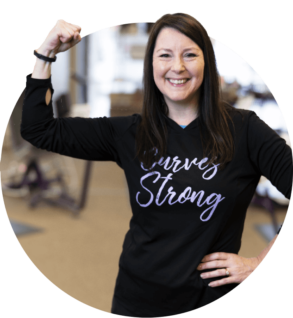Preventing Cancer: Tips to Help Lower Your Risk
We know there are health benefits of exercise and a healthy eating plan. We engage in a full body workout and try to eat fresh, whole foods to lose weight, improve cholesterol and blood pressure, and to become stronger overall. But did you know regular exercise and a weight loss diet can also help prevent cancer?1
According to the American Cancer Society, for women who do not smoke (smoking is the single most preventable cause of cancer), the most important cancer risk factors within their control are body weight, diet and physical activity. The World Cancer Research fund estimates that one-fifth of all cancers diagnosed in the United States are associated with body fat percentage, poor nutrition, and lack of physical activity. Cancers that result from these factors are preventable, and these are all risk factors you can tackle with a membership to Curves. How’s that for added weight loss motivation? Here are some health tips on what you can do to prevent cancer with your healthy eating and exercise routine:2
Understand how a whole body workout lowers your cancer risk. As you’re sweating it out at Curves, think about all the ways you’re boosting your body’s power to fight cancer. The many biological health benefits of exercise include the following:
- Reduce inflammation
- Improves immune system function
- Lowers growth factors and hormones (for example, insulin and estrogen) associated with increased cancer risk
- Helps achieve and maintain a healthy body weight
- Alters the metabolism of bile acids, which decreases levels of carcinogens in the gastrointestinal tract
- Speeds the time food travels through the digestive system, which also decreases exposure to cancer-causing chemicals3
Get the right amount
According to the ACS, to reap maximum health benefits of exercise, adult women should engage in a Curves full body workout or other moderately intense workout routine for a total of 150 minutes per week. If the exercise is more intense, you can cut the number of weekly minutes to 75. You should also limit sedentary activities, such as watching TV (or other screen), lying down, and prolonged sitting. If you work at a desk job, get up and move your body every 30 minutes or so.1
Eat green and clean
When it comes to a healthy eating plan for cancer prevention, it’s best to go for things that grow. That means eating two and a half cups of fruits and vegetables a day, which is also great for weight loss. In addition, follows these diet health tips:1
- Limit processed meats. Research has shown that processed meats (bacon, sausage, hot dogs, deli meats) increase cancer risk. In fact, about 34,000 cancer deaths in the world per year are associated with diets high in processed meats. The risk is particularly elevated for colorectal cancer. An analysis from 10 studies found that for every 50-gram portion of processed meat a person ate daily, his or her colon cancer risk rose by 18 about percent.4
- Choose whole grains over refined grains wherever you can. Whole grains contain fiber, which helps keep food moving swiftly through your digestive tract. This means brown rice, 100 percent whole grain bread, whole wheat pasta, and whole grain cereals.1
- If you drink, limit your alcohol intake. Alcohol use has been linked to increased risk for several cancers, including breast, liver, esophageal, mouth, pharynx, larynx, and colorectal cancer. There’s some evidence excessive alcohol increases risk for pancreatic and stomachs cancers, too. Plus, drinking alcohol adds pounds and can hinder attempts to get in shape by dehydrating you and making you feel tired. Drink no more than one alcoholic drink a day if you are a woman, two drinks if you are a man.1
Physical activity to protect your breasts
According to the National Cancer Institute, many studies show women who engage in physical activity or a regular workout plan have a lower risk of breast cancer than women who do not. In a review of 31 studies, researchers found physical activity reduced breast cancer risk by 12 percent. The association was particularly strong for post-menopausal women.3
Exercise for your endometrium
Studies looking at the link between physical activity and risk for endometrial cancer (cancer of the lining of the uterus) find regular exercise lowers endometrial cancer risk by 20 percent. This may be due in part to the weight reduction powers of physical activity; obesity is a known risk factor for endometrial cancer.3
Work out to prevent cancer from recurring
Anyone who has survived cancer knows it can feel like the disease follows you wherever you go, ready to strike. By bolstering your eating and workout plan, you can strengthen your body’s ability to keep cancer at bay. In a study of more than 83,000 women from the Harvard Nurses’ Health Study, moderately vigorous exercise (think tennis, swimming, bicycling, and an energetic whole body workout at Curves) was associated with a 50 percent lower mortality rate in breast cancer survivors.6
Curves offers a variety of exercise classes for women — high-intensity women’s boxing classes and cardio classes, medium to low-intensity women’s fitness classes, and low-intensity women’s balance classes. Each class is designed to to give you an effective total body workout in just 30 minutes!
Sources








